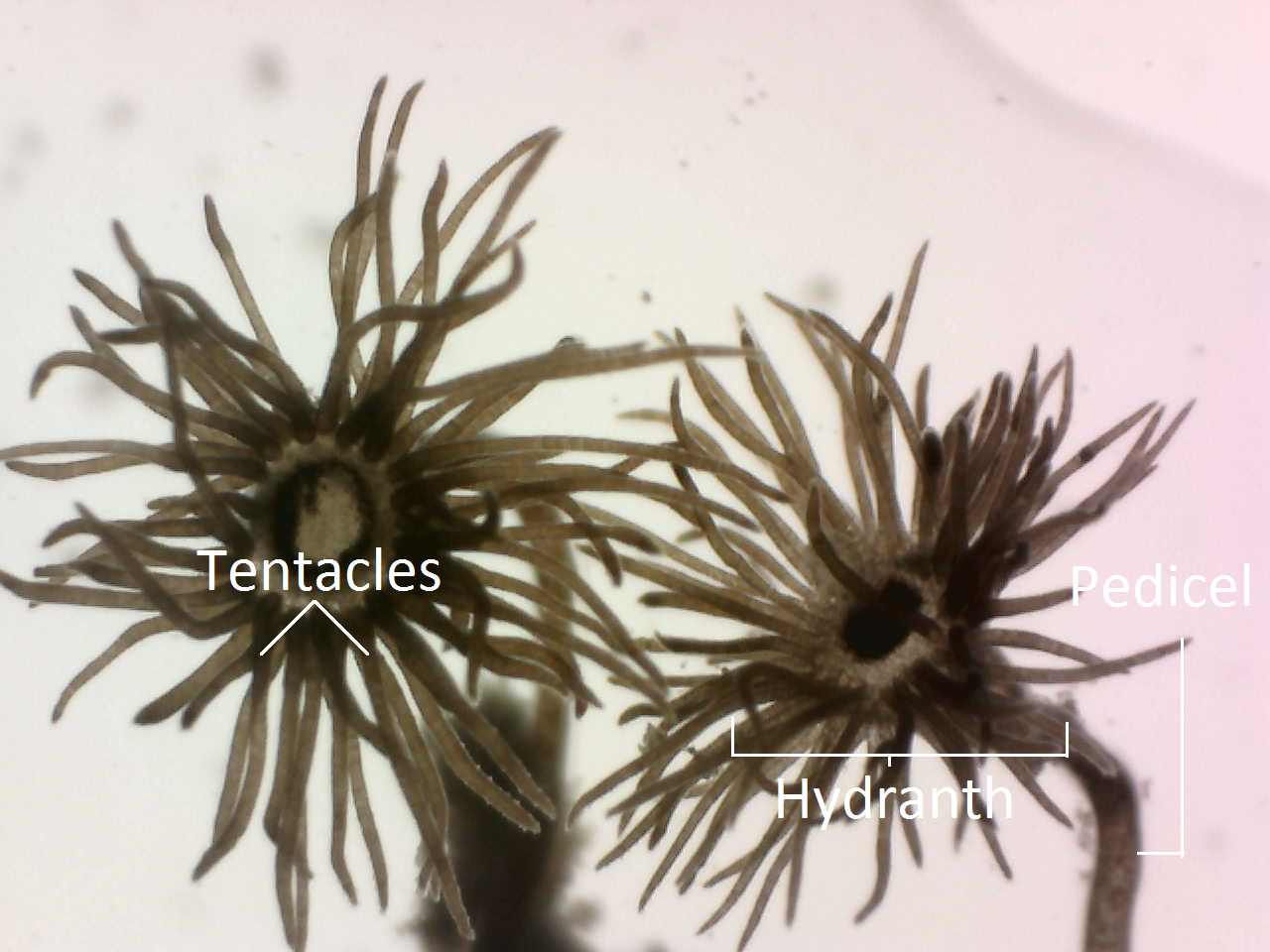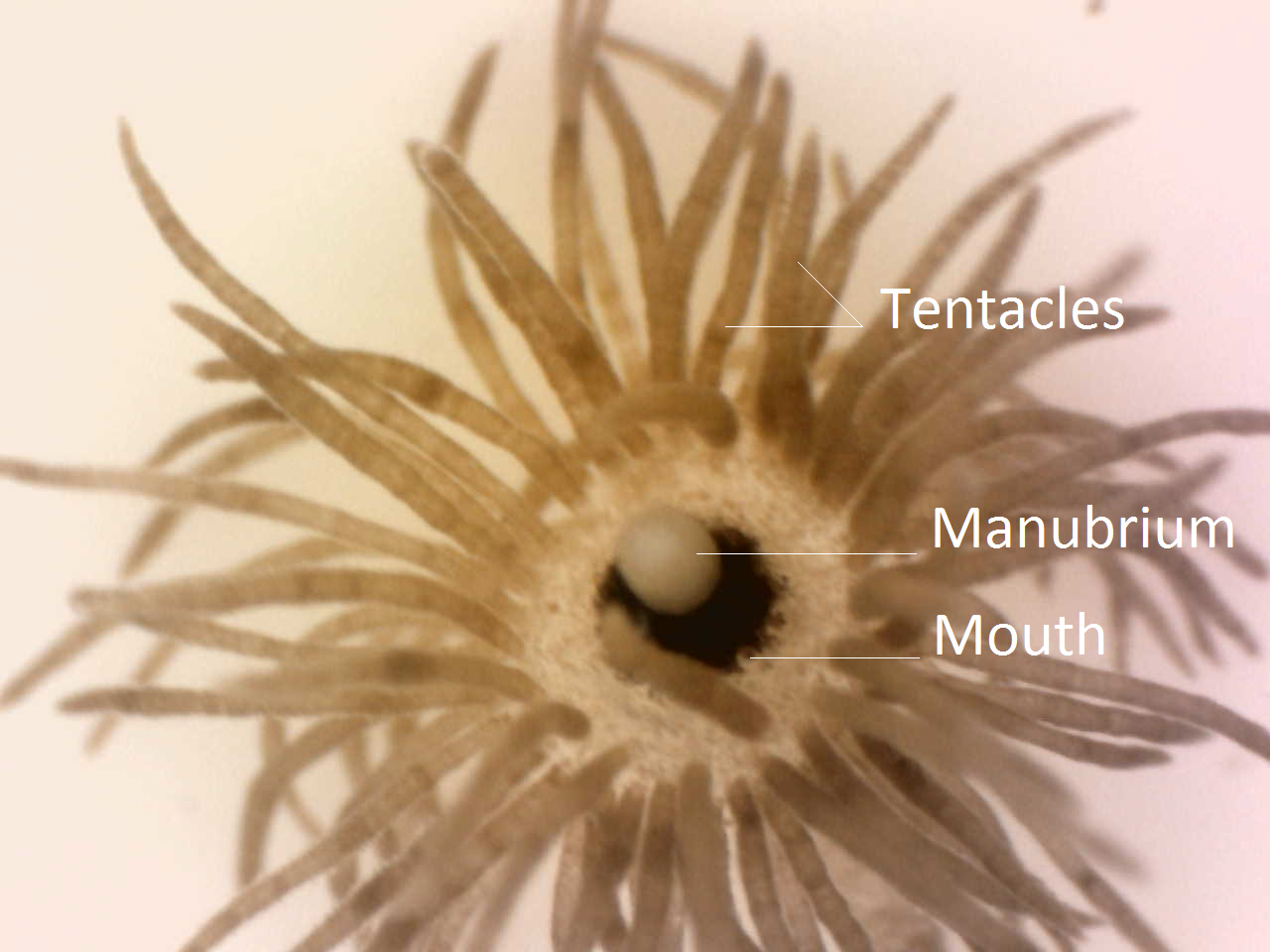Physical Description
Myrionema hargitti are small colonial hydroids, most commonly brownish-gold in colour. This colouration is due to its symbiosis with the zooxanthellae Symbiodinium (Ronchi 2012). While they often form large colonies, the individual hydranths only reach a width of 5-10mm, with its tentacles of lengths between 10 and 20mm. Unlike other hydrozoa, Myrionema hargitti possess a high density of tentacles, with no less than 50 and often upwards of 100 in healthy individuals. This contributes to a general flower-like appearance.

Figure 1. Two gastrozooid hydranths of Myrionema hargitti.
The mouth, or oral disc, is easily identifiable as a black spot at the centre of the whorl of tentacles. A clear, bulbous structure is attached to this mouth, the manubrium. This structure contains the stomach of the gastrozooids and both the stomach and gonads of the reproductive gonozooids (Ruppert et al 2004).

Figure 2. A gonozooid of Myrionema hargitti.
|